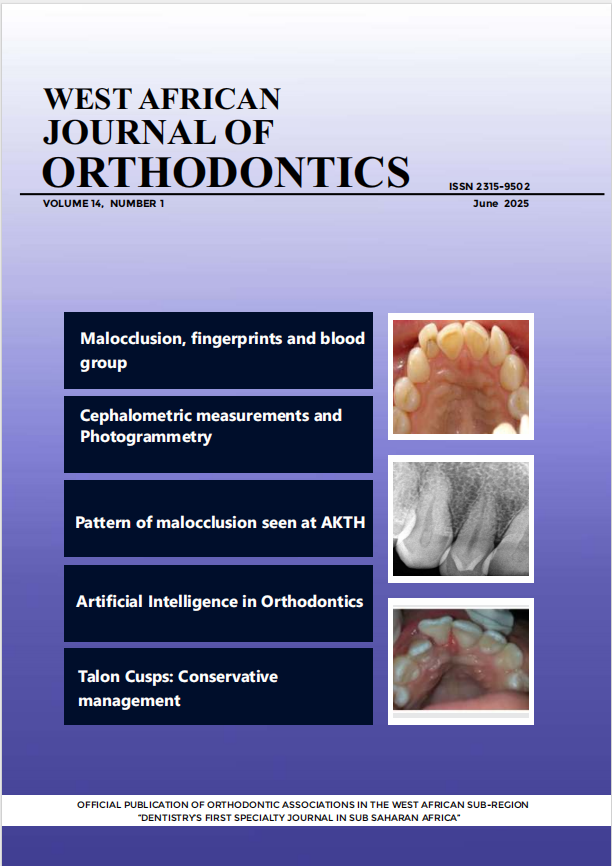Correlations between Cephalometric Measurements of Hard Tissues and Photogrammetric Features of Facial Soft Tissues.
Keywords:
Photogrammetry, cephalometry, hard tissue, soft tissueAbstract
Background: Facial soft tissues cover the teeth and the facial skeleton; maintain close anatomical relations with them and may nevertheless vary in their morphology and position. The objective of this study was to determine the correlations between soft facial tissue measurements and craniofacial hard tissue measurements..
Methods: Across-sectional descriptive study was performed using standardised tele-radiographic and photographic images of young children who had come for orthodontic care. On each selected subject, cephalometric and photogrammetric measurements were made. The data collected was analysed using the IBM SPSS 20.0 statistical software. The correlation between hard tissue cephalometric measurements and photogrammetric soft tissue measurements was investigated by a Pearson correlation. The significance is fixed at p = 0.05.
Results: ANB was significantly and positively correlated to Sn-N'-Sm. I / A-Pog was significantly and positively correlated with Ls-E and Li-E. Significant and positive correlations were found between the position of the pogonion and Sn-H. It is the same between the position of point Aand Trg-Sn distance; and between S-Ar and the variables N'-Sn and N'-Me '. Ar-Go was also significantly and positively correlated to Sn-Me ', Sn-Sts and N'-Me'.
Conclusion: The many significant and positive correlations found between cephalometric and photogrammetric variables show that these could advantageously be used to evaluate skeletal and dentoalveolar variables. This would limit the significant risks of ionizing radiation during orthodontic treatment.




